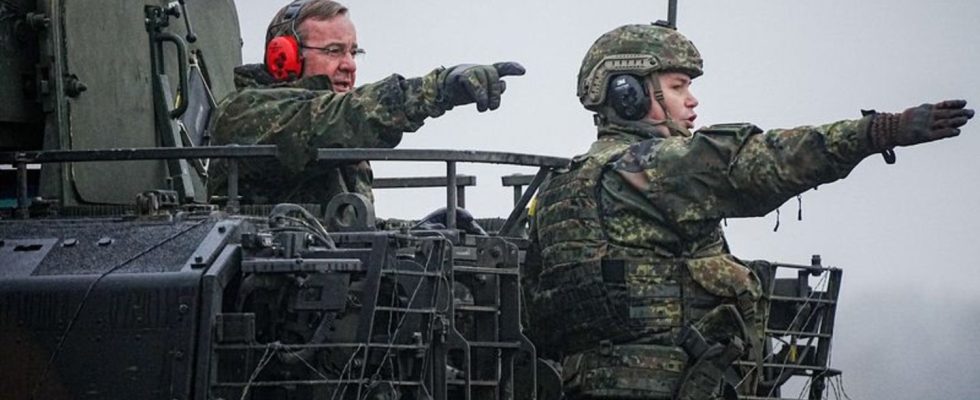Defense spending
Germany reports record sum to NATO
In the past, according to documents from the NATO archives, Germany last spent two percent of its gross domestic product (GDP) in 1992. photo
© Kay Nietfeld/dpa
During his time as US President, Donald Trump used threats to try to persuade countries like Germany to increase military spending. What he couldn’t do, Kremlin chief Vladimir Putin succeeds.
In the past, according to documents from the NATO archives, Germany last spent two percent of its gross domestic product (GDP) in 1992. During the Cold War years the rate was usually over three percent.
The development of defense spending by the NATO states will be discussed this Thursday at a meeting of defense ministers at the alliance headquarters in Brussels. It is expected that around 20 of the 31 NATO countries will reach the two percent target this year.
Increase of more than 20 percent
The new figures correspond to an increase in defense spending of more than 20 percent compared to the previous year, according to NATO circles. The last public report on defense spending by the alliance states only gave a comparative figure of $56.64 billion and a GDP ratio of 1.57 percent for Germany for 2023. According to dpa information, these numbers will be corrected upwards in the next report.
With the drastic increase in defense spending, the federal government is reacting in particular to Russia’s invasion of Ukraine. By significantly strengthening deterrence and defense, the aim is to make it clear to Kremlin chief Vladimir Putin that an attack on a European NATO country would have no chance of success.
According to the Ministry of Defense, the money will be used to finance, among other things, new infantry fighting vehicles, frigates, submarines and state-of-the-art F-35A multi-role combat aircraft.
Trump factor
The numbers could also be helpful with a view to a possible re-election of Donald Trump in the US presidential election in November. The Republican made it clear during a campaign appearance at the weekend that he would not provide American support to allies with low defense spending in the event of a Russian attack. During his term in office from 2017 to 2021, Trump had repeatedly complained about what he considered to be too low defense spending by European allies and at times even threatened that the USA would leave the alliance.
The new two percent target
NATO’s current defense spending target requires alliance members to permanently invest at least two percent of their gross domestic product in defense annually. It was decided last summer in the face of threats from Russia. The target that was valid to date only stipulated that by 2024 all alliance states should approach the benchmark of spending at least two percent of their GDP on defense.
NATO plans to present a new public overview with data on member states’ defense spending in March. It will then also show how high the estimated German defense spending is in current prices. According to information from the German Press Agency, the internal preparatory documents for the defense ministers’ meeting this Thursday only contain the inflation-adjusted comparative figures in US dollars.
With special funds for the NATO quota
The massive increase in German defense spending is currently made possible by a special fund worth 100 billion euros. However, this is expected to be used up in 2027. Defense Minister Boris Pistorius (SPD) is therefore urging that a plan be quickly developed as to how Germany can achieve the NATO targets in the long term. “We have the Chancellor’s promise that we will invest at least two percent of gross domestic product in defense by the 2030s,” Pistorius recently told “Spiegel”. The foreseeable expiry of the special fund must be reflected in the financial planning.

